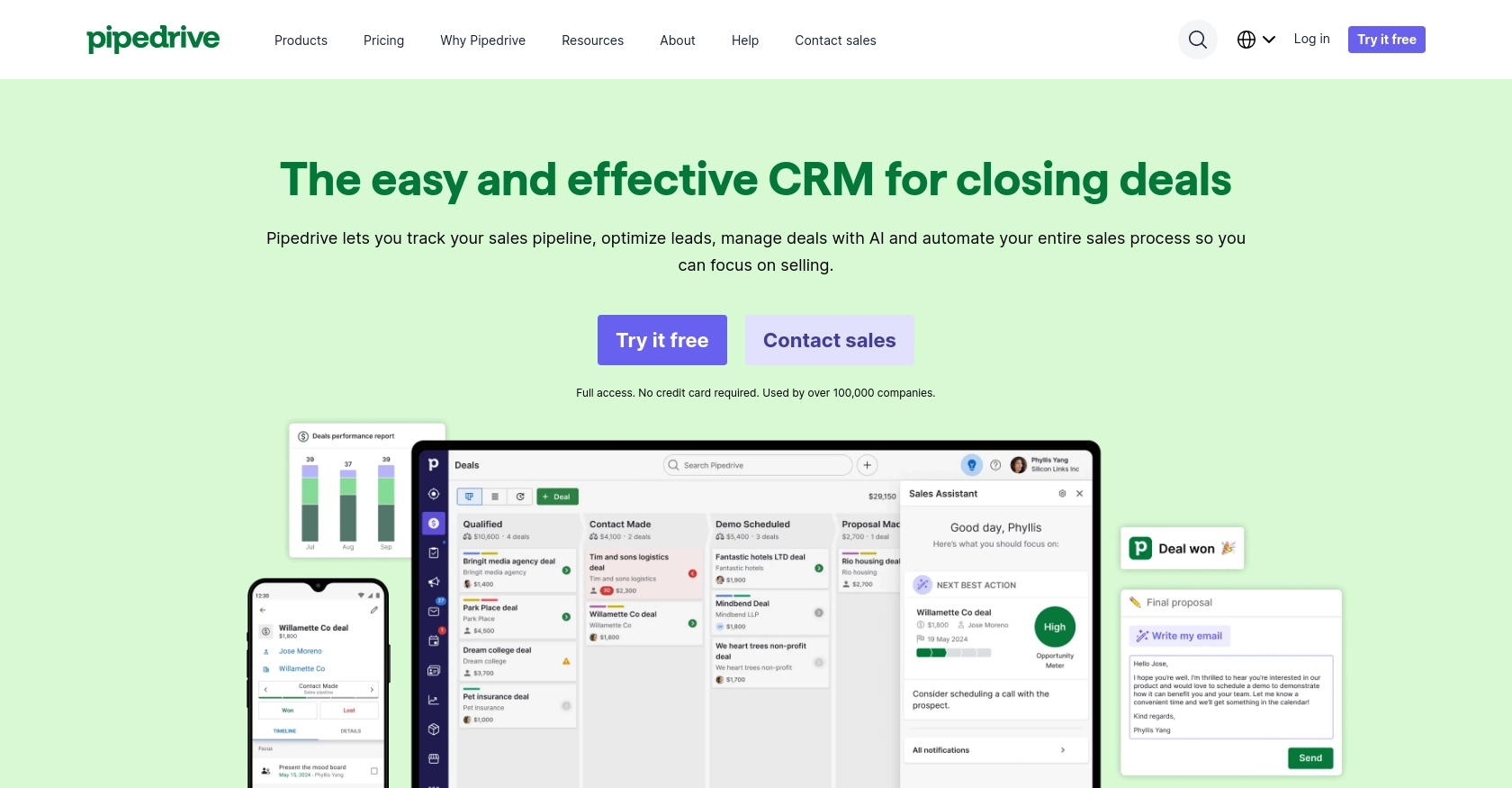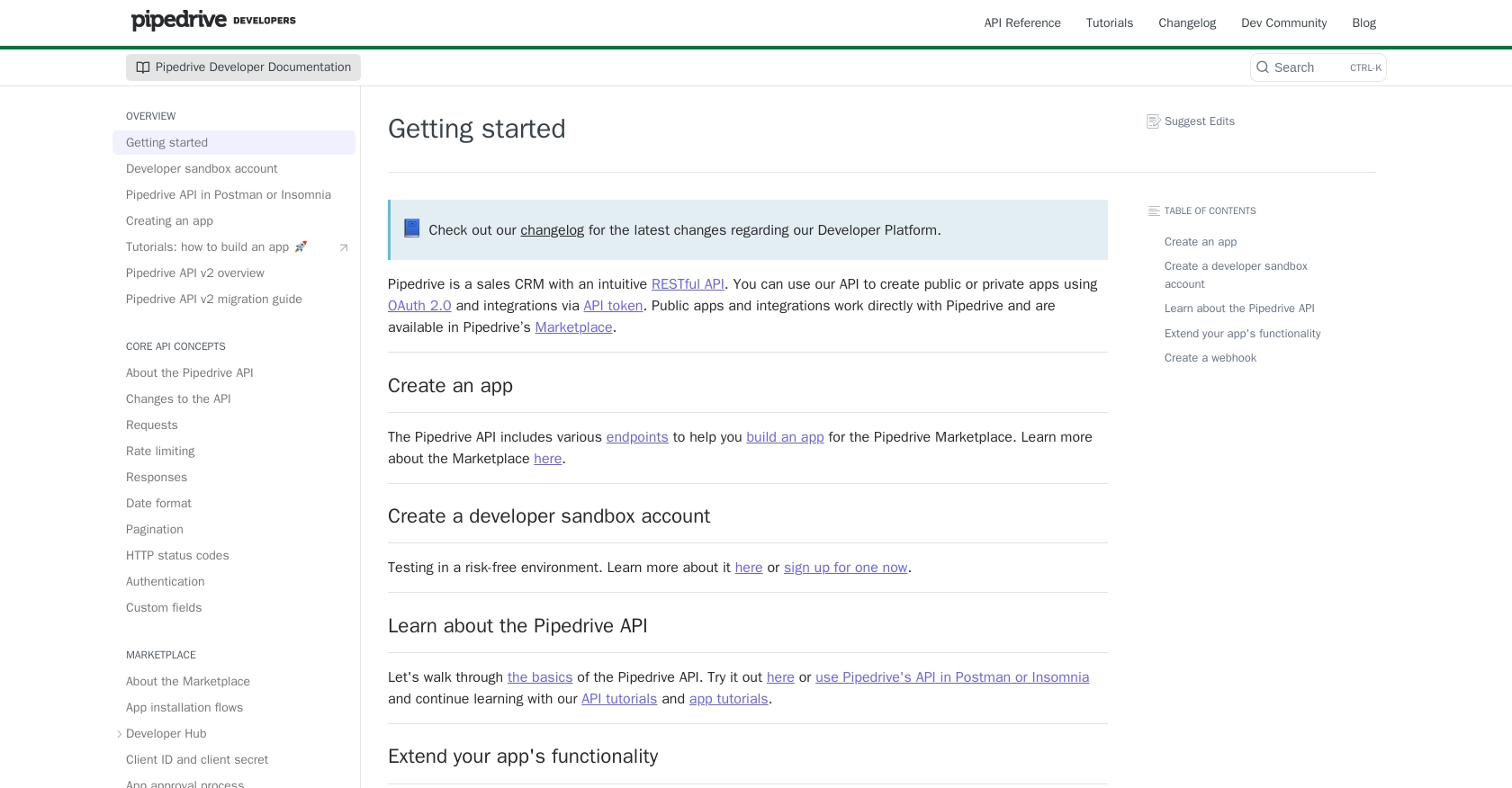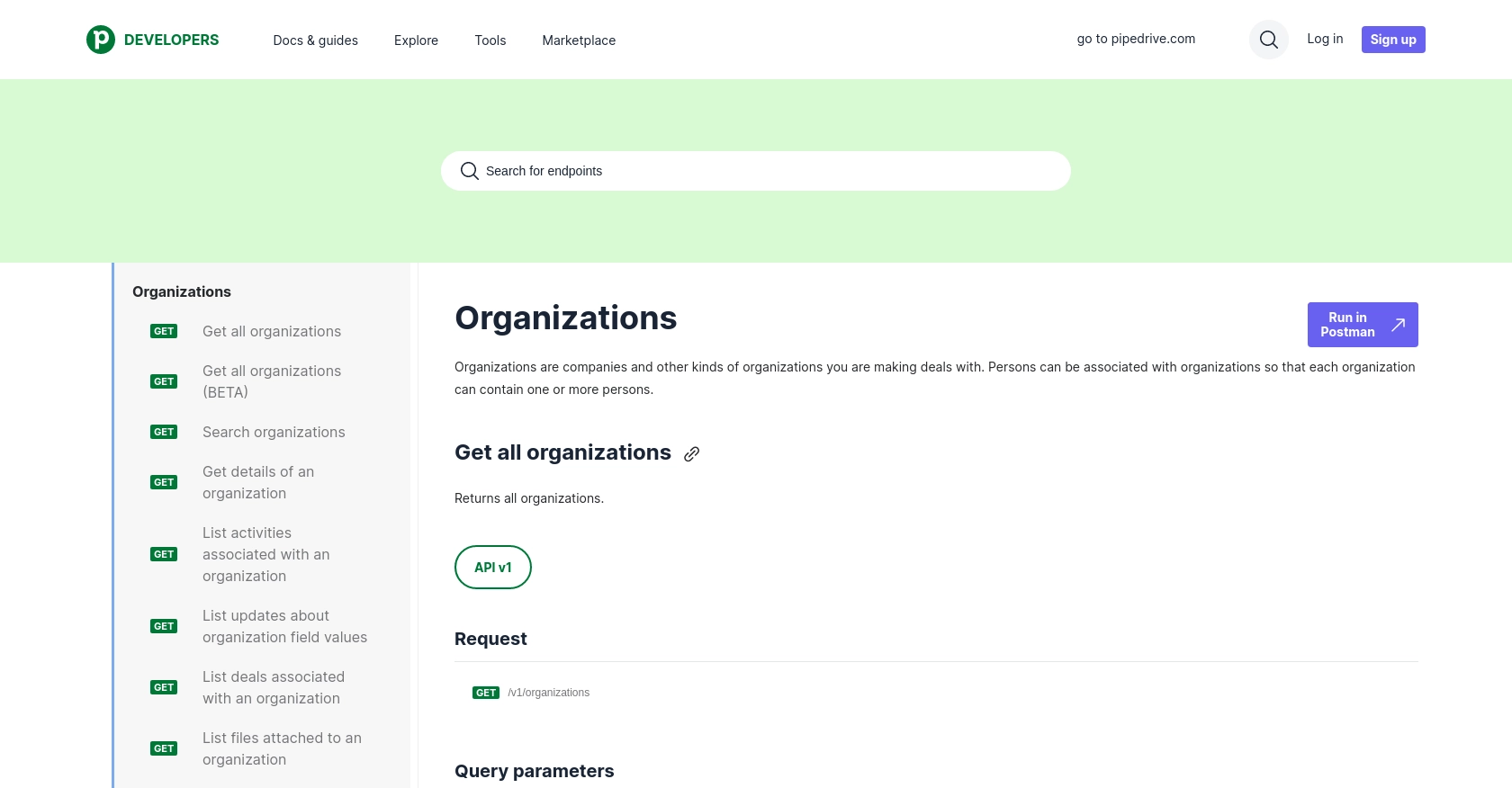Using the Pipedrive API to Create or Update Organizations (with Python examples)

Introduction to Pipedrive CRM
Pipedrive is a powerful sales CRM platform designed to help businesses manage their sales processes more effectively. Known for its intuitive interface and robust features, Pipedrive enables sales teams to track leads, manage customer relationships, and close deals efficiently.
Integrating with Pipedrive's API allows developers to automate and streamline various sales operations. For example, you can use the Pipedrive API to create or update organizations within your CRM system, ensuring that your sales data is always up-to-date and accurate. This can be particularly useful for businesses that need to manage a large number of client organizations and want to maintain a seamless flow of information between different systems.
Setting Up Your Pipedrive Developer Sandbox Account
Before you can start integrating with the Pipedrive API, you need to set up a developer sandbox account. This account provides a risk-free environment for testing and development, allowing you to explore Pipedrive's features without affecting your live data.
Creating a Pipedrive Developer Sandbox Account
To create a sandbox account, follow these steps:
- Visit the Pipedrive Developer Sandbox page.
- Fill out the required form to request access to a sandbox account.
- Once approved, you'll receive access to a sandbox environment with sample data to help you get started.
Setting Up OAuth Authentication for Pipedrive API
Pipedrive uses OAuth 2.0 for authentication. Follow these steps to set up OAuth for your application:
- Log in to your Pipedrive sandbox account and navigate to the Developer Hub.
- Register your application by providing necessary details such as the app name and description.
- Once registered, you'll receive a client ID and client secret. Keep these credentials secure as they are essential for the OAuth flow.
- Define the scopes your application will need. Ensure you only request the scopes necessary for your use case.
- Implement the OAuth flow in your application to obtain an access token. This token will be used to authenticate API requests.
For more detailed guidance on setting up OAuth, refer to the Pipedrive OAuth documentation.

sbb-itb-96038d7
Making API Calls to Pipedrive for Creating or Updating Organizations Using Python
To interact with the Pipedrive API for creating or updating organizations, you'll need to use Python. This section will guide you through setting up your environment, making API calls, and handling responses effectively.
Setting Up Your Python Environment for Pipedrive API Integration
Before making API calls, ensure you have Python installed on your machine. This tutorial uses Python 3.11.1. Additionally, you'll need the requests library to handle HTTP requests.
- Install Python from the official Python website if you haven't already.
- Use pip to install the
requestslibrary by running the following command in your terminal:
pip install requestsCreating an Organization in Pipedrive Using Python
To create a new organization in Pipedrive, you'll need to make a POST request to the Pipedrive API endpoint. Here's a step-by-step guide with example code:
import requests
# Define the API endpoint and headers
url = "https://api.pipedrive.com/v1/organizations"
headers = {
"Authorization": "Bearer Your_Access_Token",
"Content-Type": "application/json"
}
# Define the organization data
organization_data = {
"name": "New Organization",
"owner_id": 123456
}
# Make the POST request
response = requests.post(url, json=organization_data, headers=headers)
# Check the response status
if response.status_code == 201:
print("Organization created successfully:", response.json())
else:
print("Failed to create organization:", response.status_code, response.json())
Replace Your_Access_Token with the access token obtained through the OAuth flow. The owner_id should be replaced with the actual user ID.
Updating an Organization in Pipedrive Using Python
To update an existing organization, use the PUT method. Here's how you can do it:
import requests
# Define the API endpoint and headers
organization_id = 789012
url = f"https://api.pipedrive.com/v1/organizations/{organization_id}"
headers = {
"Authorization": "Bearer Your_Access_Token",
"Content-Type": "application/json"
}
# Define the updated organization data
updated_data = {
"name": "Updated Organization Name"
}
# Make the PUT request
response = requests.put(url, json=updated_data, headers=headers)
# Check the response status
if response.status_code == 200:
print("Organization updated successfully:", response.json())
else:
print("Failed to update organization:", response.status_code, response.json())
Ensure you replace organization_id with the ID of the organization you wish to update.
Handling API Responses and Errors for Pipedrive API Calls
When making API calls, it's crucial to handle responses and potential errors. The Pipedrive API uses standard HTTP status codes to indicate success or failure:
- 200 OK: The request was successful.
- 201 Created: A new resource was successfully created.
- 400 Bad Request: The request could not be understood by the server.
- 401 Unauthorized: Authentication failed. Check your access token.
- 429 Too Many Requests: Rate limit exceeded. Consider implementing rate limiting strategies.
For more details on error handling, refer to the Pipedrive HTTP Status Codes documentation.

Conclusion and Best Practices for Pipedrive API Integration
Integrating with the Pipedrive API to create or update organizations can significantly enhance your CRM capabilities, allowing for seamless data management and automation. By following the steps outlined in this guide, you can efficiently manage your organization's data within Pipedrive using Python.
Best Practices for Secure and Efficient Pipedrive API Usage
- Secure Storage of Credentials: Always store your client ID, client secret, and access tokens securely. Consider using environment variables or secure vaults to protect sensitive information.
- Implement Rate Limiting: Be mindful of Pipedrive's rate limits, which allow up to 80 requests per 2 seconds per access token for the Essential plan. Implement strategies to handle rate limiting, such as exponential backoff or request queuing.
- Data Standardization: Ensure that data fields are standardized across systems to maintain consistency and accuracy in your CRM data.
- Error Handling: Implement robust error handling to manage API response codes effectively. This includes retry mechanisms for transient errors and logging for debugging purposes.
Enhancing Your Integration Strategy with Endgrate
For developers looking to streamline their integration processes further, consider leveraging Endgrate. With Endgrate, you can save time and resources by outsourcing integrations, allowing you to focus on your core product. Endgrate provides a unified API endpoint that simplifies interactions with multiple platforms, including Pipedrive, offering an intuitive integration experience for your customers.
Explore how Endgrate can enhance your integration strategy by visiting Endgrate's website and discover the benefits of building once for each use case instead of multiple times for different integrations.
Read More
- https://endgrate.com/provider/pipedrive
- https://pipedrive.readme.io/docs/getting-started
- https://pipedrive.readme.io/docs/developer-sandbox-account
- https://pipedrive.readme.io/docs/marketplace-creating-a-proper-app
- https://pipedrive.readme.io/docs/core-api-concepts-rate-limiting
- https://pipedrive.readme.io/docs/core-api-concepts-pagination
- https://pipedrive.readme.io/docs/core-api-concepts-http-status-codes
- https://pipedrive.readme.io/docs/core-api-concepts-custom-fields
- https://developers.pipedrive.com/docs/api/v1/Organizations
- https://developers.pipedrive.com/docs/api/v1/OrganizationFields
- https://developers.pipedrive.com/docs/api/v1/OrganizationRelationships
Ready to get started?
